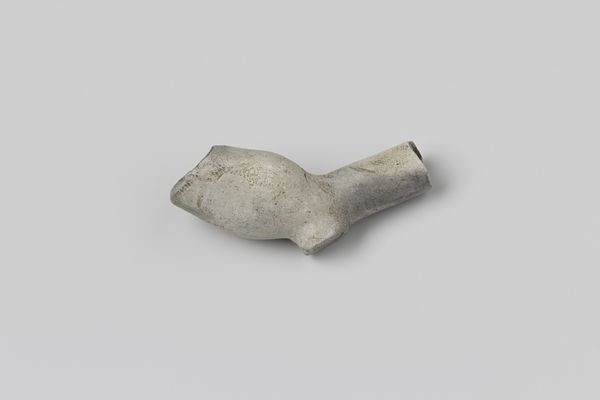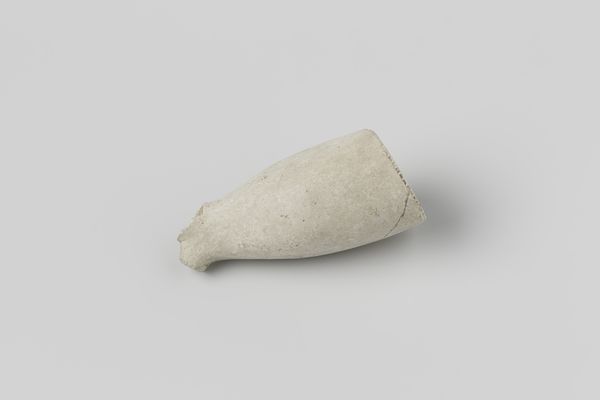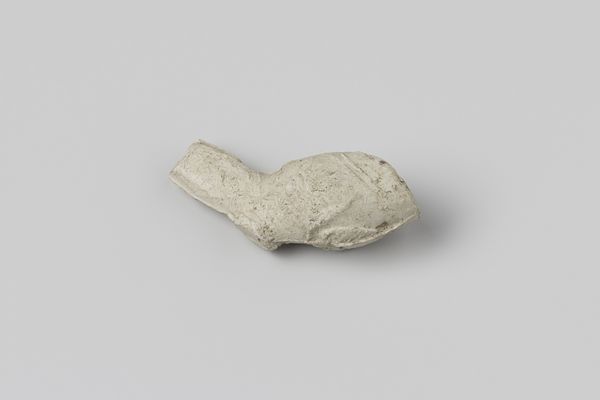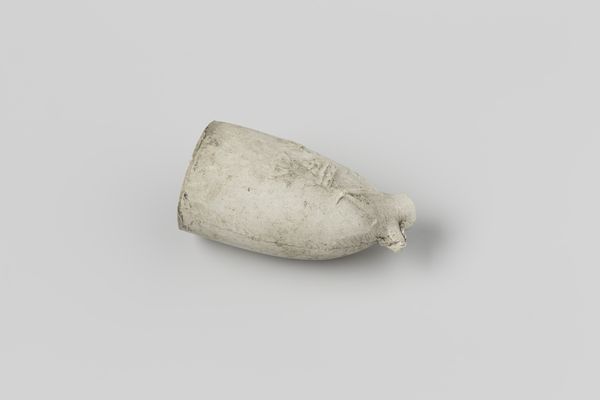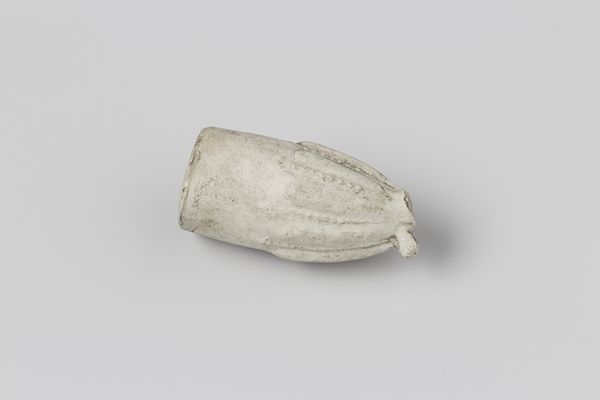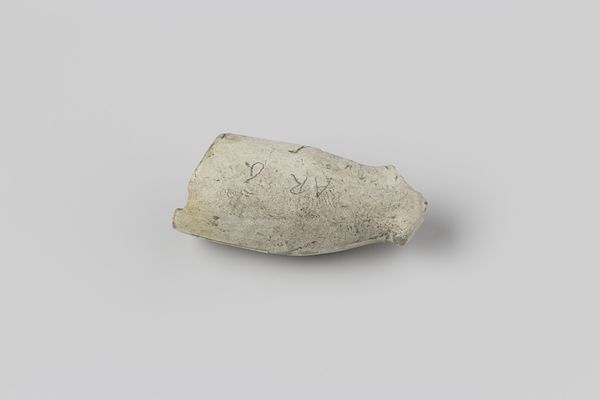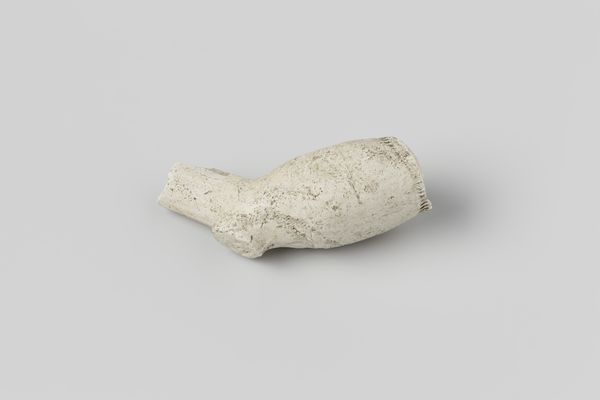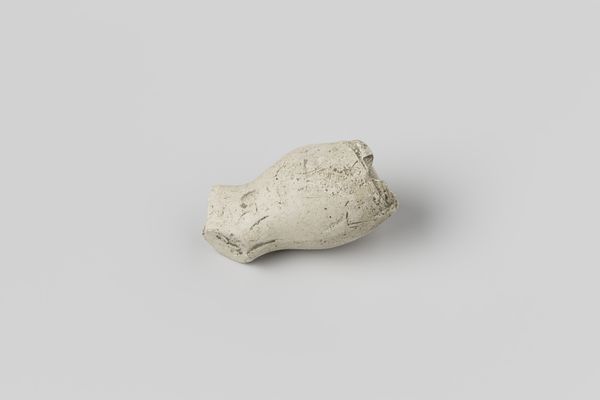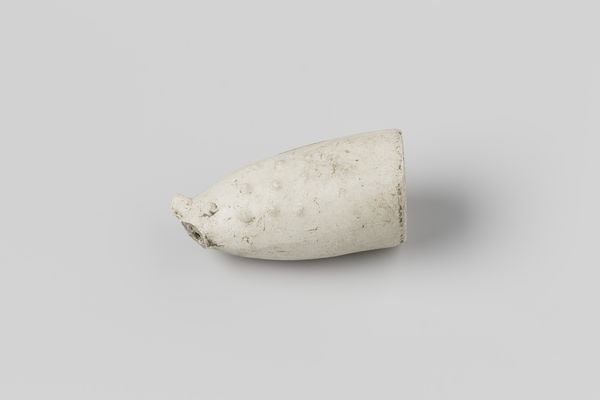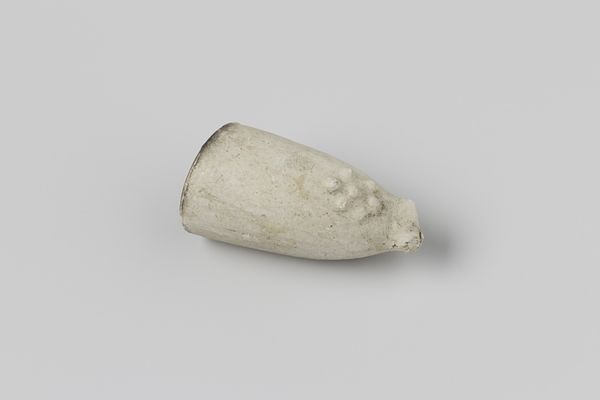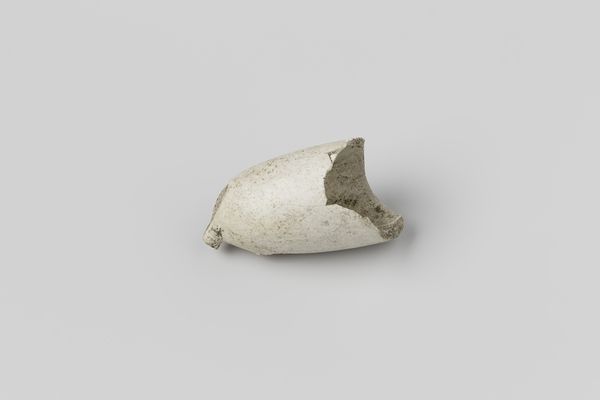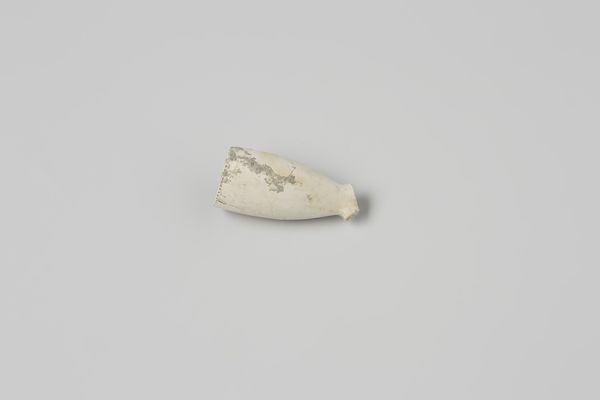
ceramic, earthenware
#
dutch-golden-age
#
ceramic
#
earthenware
Dimensions: length 3.6 cm, width 1.7 cm
Copyright: Rijks Museum: Open Domain
Curator: Before us, we have a piece titled "Pijpenkop," or "Pipe Head," dating roughly between 1635 and 1650, crafted anonymously during the Dutch Golden Age. It's earthenware, a fragment, really. What do you make of it? Editor: It looks like a relic—something you'd unearth in your garden after a rain, prompting thoughts of someone from a bygone era pausing for a contemplative smoke. Melancholy and grounded, maybe? Curator: An apt interpretation. Note the surviving structure. The semi-circular shape terminating in an abrupt breakage invites speculation. Was this destruction incidental, or was it deliberate, an act performed perhaps for artistic effect? Editor: Could be the perils of enjoying tobacco outdoors, a momentary slip. Still, even broken, it exudes a simple, honest aesthetic—a direct link to daily life back then. No pretense here. Curator: Quite so. The simplicity inherent in both its function and materials allows for it to almost recede. Earthenware of the Golden Age rarely announces itself, it integrates, serves its purpose without bravado. It prompts a focus not on the artifact itself but on the experiential. Editor: It’s the subtle, granular texture that I keep circling back to. Feel the texture on the surface – it would be rough, almost primitive, in contrast with some of the extravagant displays of the period. I wonder if the artisan ever imagined that one day their everyday pipe might exist isolated in space and time, prompting discussion on art and being? Curator: I would argue, from a purely formal perspective, that what captivates is how this seemingly humble shard can contain entire universes of speculation. The very break is, in itself, an act of violent creation, isn't it? Editor: Exactly! Even a fragment, carrying histories and mysteries within it. That's what brings me back every time: how everyday objects become monuments to an era, accidentally telling far grander tales. Curator: Precisely. It prompts a richer reflection, this single object, precisely by what it now lacks. Editor: Yes, what's missing becomes the point, the silence. I find myself creating stories from it, seeing not just an object but a little vessel carrying the whispers of another time.
Comments
No comments
Be the first to comment and join the conversation on the ultimate creative platform.
